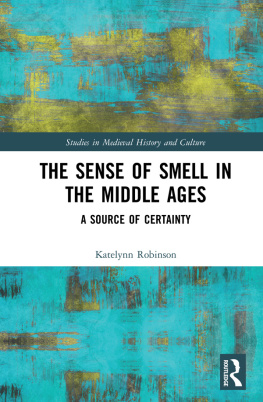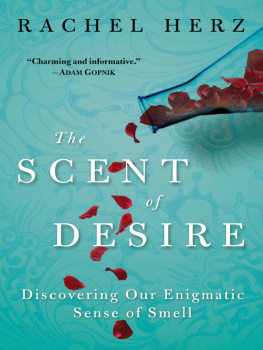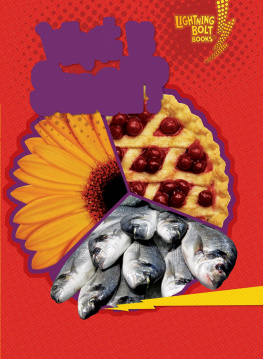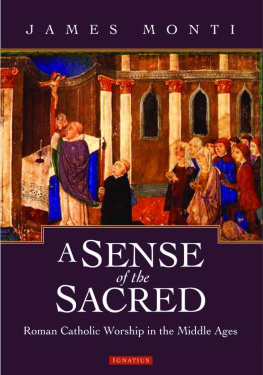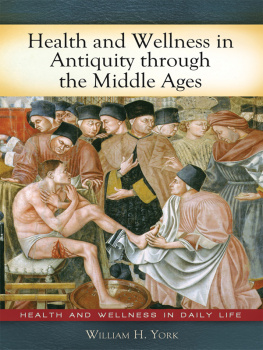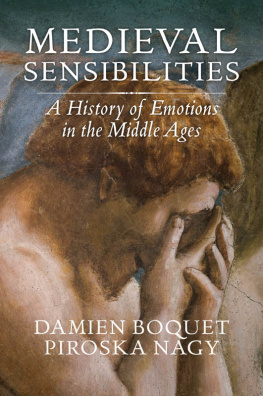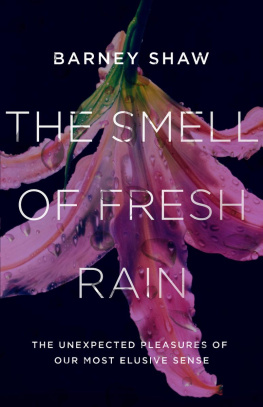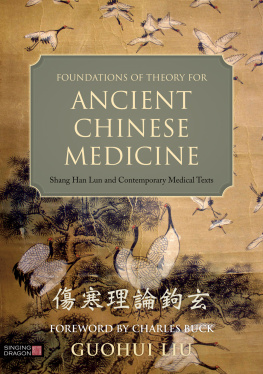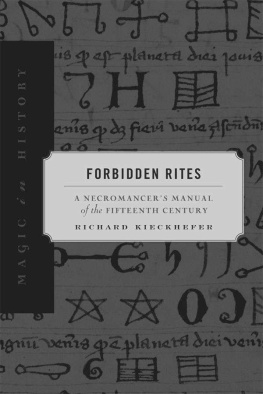The Sense of Smell in the Middle Ages
Odors, including those of incense, spices, cooking, and refuse, were both ubiquitous and meaningful in central and late medieval Western Europe. The significance of the sense of smell is evident in scholastic Latin texts, most of which are untranslated and unedited by modern scholars. Between the late eleventh and thirteenth century, medieval scholars developed a logical theory of the workings of the sense of smell based on Greek and Arabic learning. In the thirteenth through fifteenth century, medical authors detailed practical applications of smell theory and these were communicated to individuals and governing authorities by the medical profession in the interests of personal and public health. At the same time, religious authors read philosophical and medical texts and gave their information religious meaning. This reinterpretation of scholastic philosophy and medicine led to the development of what can be termed a medically aware theology of smell that was communicated to popular audiences alongside traditional olfactory theory in sermons. Its impact on popular thought is reflected in late medieval mystical texts. While the senses have received increasing scholarly attention in recent decades, this volume presents the first detailed research into the sense of smell in the later European Middle Ages.
Katelynn Robinson completed her PhD at the University of Missouri. Her current research focuses on the importance of the sense of smell in medieval culture.
Studies in Medieval History and Culture
Recent titles include
The Charisma of Distant Places
Travel and Religion in the Early Middle Ages
Courtney Luckhardt
The Death Penalty in Late Medieval Catalonia
Evidence and Signification
Flocel Sabat
Church, Society and University
The Paris Condemnation of 1241/4
Deborah Grice
The Sense of Smell in the Middle Ages
A Source of Certainty
Katelynn Robinson
The Sense of Smell in the Middle Ages
A Source of Certainty
Katelynn Robinson

First published 2020
by Routledge
2 Park Square, Milton Park, Abingdon, Oxon OX14 4RN
and by Routledge
52 Vanderbilt Avenue, New York, NY 10017
Routledge is an imprint of the Taylor & Francis Group, an informa business
2020 Katelynn Robinson
The right of Katelynn Robinson to be identified as author of this work has been asserted by her in accordance with sections 77 and 78 of the Copyright, Designs and Patents Act 1988.
All rights reserved. No part of this book may be reprinted or reproduced or utilised in any form or by any electronic, mechanical, or other means, now known or hereafter invented, including photocopying and recording, or in any information storage or retrieval system, without permission in writing from the publishers.
Trademark notice: Product or corporate names may be trademarks or registered trademarks, and are used only for identification and explanation without intent to infringe.
British Library Cataloguing-in-Publication Data
A catalogue record for this book is available from the British Library
Library of Congress Cataloging-in-Publication Data
A catalog record has been requested for this book
ISBN: 978-0-367-00068-4 (hbk)
ISBN: 978-0-429-44472-2 (ebk)
Typeset in Times New Roman
by Newgen Publishing UK
Contents
I would like to thank my doctoral advisor, A. Mark Smith, who read drafts of chapters and assisted with difficult Latin translations as I worked on my dissertation and as I edited it for publication. My project would have been entirely different (and less interesting) without his insight. I also owe my thanks to the rest of my dissertation committee at the University of Missouri, Columbia, Lois Huneycutt, John Frymire, Anne Stanton, Kristy Wilson-Bowers, and Russel Zguta, who provided support on various aspects of my topic, both as I wrote and in the years before. Writing on the history of smell in the central and late Middle Ages has obliged me to become familiar with quite a variety of fields, and their help in navigating such topics as scholasticism, medicine, art history, and theology has been invaluable. Likewise, I am deeply grateful to the Department of History for selecting me to receive a dissertation year fellowship, which provided me with time to delve into the scholastic Latin texts that form the basis of this book. Because I have been working with smell since 2011, many people across the Mizzou campus and at conferences have told me about interesting examples of odor and smell in medieval texts. Although I cannot name them all here, I would like to thank them for their support and interest in my topic. In particular, I want to thank the professors at MU who read my papers on different aspects of smell in premodern history and the entire Medieval and Renaissance Studies community on campus, who frequently emailed me with citations for recent articles and books on smell and references to odors in medieval texts. I owe special thanks to Amanda Kenney and Alexis Miller, who read drafts and helped me to clarify the sometimes-obscure scholastic theory this book is filled with. I would also like to thank the members of the 2016 Newberry Dissertation Seminar for Historians, who gave me valuable insight on presenting my topic to scholars outside of my university and my field. Last but not least, I thank the anonymous reviewers at Routledge, who gave me many helpful suggestions. Any oversights or mistakes are my own.
| Series |
| AGM | Archiv fr Geschichte der Medizin |
| CCCM | Corpus Christianorum, Continuatio Mediaevalis |
| CCSL | Corpus Christianorum, Series Latina |
| EETS | Early English Text Society (o.s.: Original Series; e.s. Extra Series; s.s.: Supplementary Series) |
| PG | Patrologia cursus completus, Series Graeca, edited by J.-P. Migne. 161 vols. Paris: 185766. |
| PL | Patrologia cursus completus, Series Latina, edited by J.-P. Migne. 221 vols. Paris: 184458. |
Frequently cited works
Albertus Magnus, De homine | Albertus Magnus. Summa de creaturis, secunda pars, quae est de homine, in Opera Omnia, Vol. 35, edited by Borgnet. Paris: Vives, 1894. |
Aristotle, De anima | Aristotle. De anima (translatio noua, Iacobi Venetici translationis recensio). In Thomas Aquinas, Opera Omnia 45.1: Sentencia libri de anima, edited by R.-A. Gauthier. 3258. Rome: Commissio Leonina, 1984. Aristoteles Latinus Database. Aristoteles Latinus 12.2. |
Aristotle, Meteorologica | Aristotle. Meteorologica (vel Metheora). Edited by G. Vuillemin-Diem. 2008. Aristoteles Latinus Database. Aristoteles Latinus 10.2.2. |
Aristotle, De sensu | Aristotle. De sensu et sensato (translatio noua, Anonymi saec. XII [siue Nicolai] translationis recensio). In Thomas Aquinas, Opera Omnia 45.2: Sentencia libri de sensu et sensato, edited by R.-A. Gauthier. 396. Rome: Commissio Leonina, 1985. Aristoteles Latinus Database. Aristoteles Latinus 13.2. |

